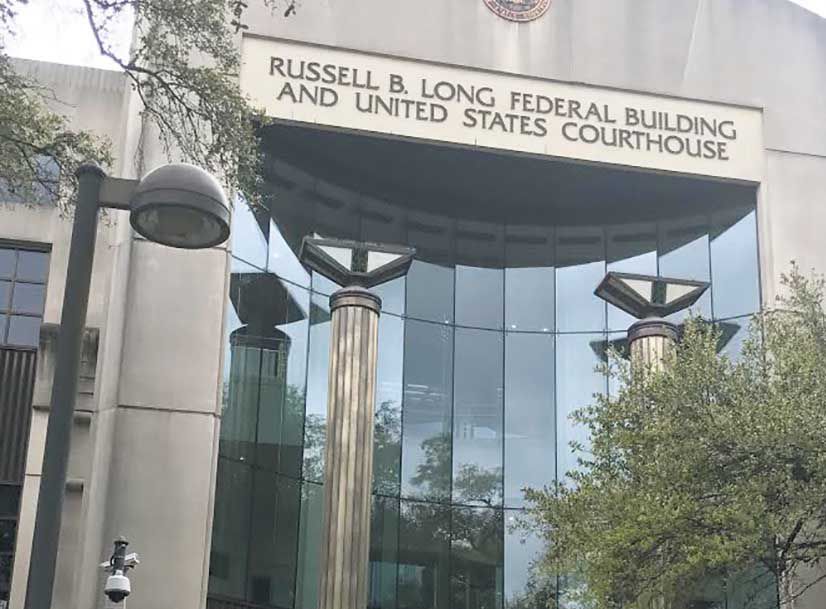
A look into the future: Businessmen using drones to get work done
June 14, 2017OUR VIEW: Prepare NOW for hurricane season
June 14, 2017Attorneys on both sides of the question relating to whether federal law is violated by at-large election of judges in Terrebonne Parish filed their closing briefs last week, the first step in a two-tier process of filing written summaries which will be completed Saturday.
Once those final briefs are filed the matter will be left entirely in the hands of U.S. District Judge James Brady, who is expected to announce a decision by September.
The briefs filed last week, each about 140 pages in length, allow each side to tie up ends left loose during an eight-day trial conducted during March and April in Judge Brady’s Baton Rouge courtroom, and to summarize arguments, evidence and testimony presented during the proceedings.
The Terrebonne Parish NAACP and several of its members have maintained that the state violates Section 2 of the U.S. Voting Rights Act and sued both the governor and the attorney general. If the plaintiffs prevail, the state would likely be ordered to come up with a different method of electing judges in Terrebonne, likely by creating one or more sub-districts within the 32nd Judicial District, which comprises all of the parish. One sub-district would likely include large portions of what are now Parish Council districts one and two, which have majority black populations.
Within its first three pages attorneys for the state maintain that the judge must find against the plaintiffs, arguing that there is no proof they have been damaged by any actions or inactions of the governor and the attorney general, or anyone else.
“There is no evidence of an injury,” the brief states. “The testimony offered by the plaintiffs and other witnesses demonstrates that the Plaintiffs have been able to elect candidates of choice to parish-wide positions in Terrebonne Parish, even through at-large elections.”
Both sides extracted elements of testimony given by witnesses at trial, in some cases expressing for the first time why specific questions asked and answered of various witnesses had significance.
One issue that got extensive treatment was the election of District Judge Juan Pickett, whose non-opposed election figured early on into the brief for the state filed last week. Early in the state’s arguments, the 32nd Judicial District’s first black judge became a focal point, as attorneys attempted to over-ride claims by the plaintiffs that he was not or would have been their candidate of choice, an element crucial in Voting Rights Act cases such as this one.
“Plaintiff Daniel Turner testified that Juan Pickett was his candidate of choice for judge … Judge Pickett, a minority lawyer, was elected to the 32nd JDC in 2014 under the current at-large method of electing judges to the 32nd JDC. Not only was Judge Pickett Plaintiff Turner’s candidate of choice, Plaintiff Turner assisted Judge Pickett with his campaign for judge: he spoke to different people, introduced Judge Pickett to the ministerial alliance, set up meetings with ministers and different community leaders. Plaintiff Turner provided Judge Pickett with yard sign locations and worked very hard on Judge Pickett’s campaign.”
Attorneys for the plaintiffs, in their brief, cited testimony from their experts which rejected the suggestion that Pickett could have been a viable choice for most black voters, noting that “Multiple aspects of Judge Pickett’s background weigh against a finding that he would have been the candidate of choice of Black voters. Judge Pickett is not from Terrebonne and does not live in a majority-black neighborhood.”
They cited testimony from a different plaintiff, the Rev. Vincent Fusilier, who stated that Pickett “is not one from Terrebonne that lived what we had to live through.”
“Judge Pickett, in the position that he’s in, is like a stranger in a strange land,” Fusilier testified. “He doesn’t understand our people because he has never lived like we have lived. In the communities that we live in, no one knew him.”
In their brief, the plaintiffs noted that Pickett did not sign a 1997 letter from black lawyers in support of a majority-black sub-district. They also noted that he had defended a retired judge, Timothy Ellender, during judiciary commission hearings against him for wearing an Afro wig, inmate jumpsuit and a substance meant to make his face appear dark during a Halloween party.
They suggest that Turner’s testimony regarding support for Pickett contradicts the idea that support meant there was a choice, citing his own testimony that “in that particular election, we didn’t have a choice ‘cause he’s the only one that ran.”
Testimony from other sitting judges regarding their opposition to creation of a sub-district was noted in the defense closing document, among them District Judge Johnny Walker, who testified about what the lawyers described as “linkage” between voters and judges.
“When a judge is elected in one district, he is not accountable to the rest of the members of the parish,” Walker stated during his time on the stand. “We have cases that deal with subject areas that are of common concern to all residents, and I believe the voters want to have input as to who is going to decide the cases.”
Another local voice, former State Rep. Hunt Downer, testified that in his opinion, only being able to elect judges from a certain district would dilute voter strength from the minority district, since those voters would be unable to vote for other judges outside the district.
That argument was bolstered by Michael Hefner, a defense expert who said that under one proposed plan for a minority sub-district “9.8 percent of African-Americans would have absolutely no voice in the election of their judges in my opinion.”
“The effect of such a majority-minority district would be that the remainder of the parish has very little African- American representation,” the brief states.
In the plaintiff brief, attorneys attacked a position long-taken by the defense, that neither the governor nor the attorney general have any say in how judicial districts are managed in the state.
The governor, they argue, is the chief executive officer of Louisiana and has the duty to support the U.S. Constitution and the Voting Rights Act of 1965. He is empowered, they said, to appoint a task force to study the electoral method for the 32nd JDC, recommend that the Legislature enact legislation to change that method, and if necessary “call an extraordinary session of the Legislature to enact legislation to alter that method.”
The plaintiffs got a strong boost of moral support last week when Pascal Frank Calogero, the Louisiana Supreme Court’s most recent retired chief justice, published an opinion piece in the Baton Rouge Advocate recalling his own creation of a task force for creation of diversity in Louisiana’s judiciary, and linking it to the Terrebonne Parish case.
“Between 1968, when the 32nd JDC was created, and 2014, when the lawsuit was filed, no black person had ever served on that court,” wrote Calogero, who served in the Louisiana courts for 36 years. “Though a black candidate was elected to an open seat without opposition in 2014 under the existing system, plaintiffs continue to seek a subdistrict that survives any one individual and ensures systemic inclusion on the 32nd Judicial District Court. Ultimately, the creation of a majority-black subdistrict for the 32nd JDC would — as other majority-black sub-districts have done in Louisiana — help increase the public’s confidence in that court, by reducing the racial isolation of judges and countering the perception of any bias in that court’s operations.” •










